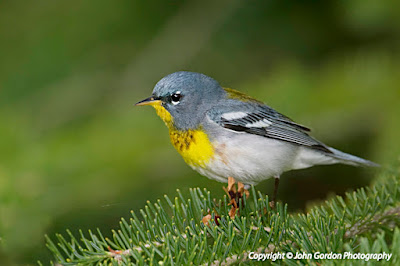Prior to my trip which began May 11/15 I had 152 BC species for my 2015 Canada list. I ended the X-Country trip on July 8 with a further 117
I would like to thank the following birders who contributed their time and expertise and made my trip that much more memorable, more so than had I been left to my own devices.
Calgary's David Lily who drove me to Frank Lake where we found many birds including the first lifer of the trip, a White-faced Ibis. His hospitality and birding knowledge set the tone for the rest of my trip. Thanks David.
Whytewold's Charlie McPherson who took the time out of his busy schedule to show me around Manitoba's Netley/Lebau IBA MB009 and to Ray Methot who took me on two 16 hours mega birding days to MB 091 Riverton Sandy Bar and other locals. Both these birders, Ray for his unbounded energy and Charlie for the hospitality are what make this pastime so enjoyable.
I'll never forget watching the dawn sky unfold on the windy shore of Winnipeg Lake as thousands of Orioles, Blackbirds, Warblers and Sandpipers migrated over our heads. Charlie told me it was a once in a lifetime event, those scenes will be indelibly etched in my memory. Talk about being in the right place at the right time. I hope to return very soon, maybe for winter owls and raptors.
and
Winnipeg's Christian Artuso for his invaluable help, tips and suggestions.
Iain Wilkes of Carleton Place, Ottawa who led me to two lifers just outside Ottawa and set aside some of his valuable time to show me, a complete stranger around his local patch. Whereas I bird by sight Iain birded by ear, something I hope to develop as I bird in the future.
in New Brunswick
I want to thank Denys Bourque who took me out with the Edmundson Naturalists Group for a day of birding. Denys found us a number of great birds in the decidious forests including some beautiful Evening Grosbeaks, Northern Waterthrush and Eastern Phoebe.
Author Roger Burrows who showed me around Whitehead Island in the Bay of Fundy. He even gave me a signed copy of Birds of Atlantic Canada (Lone Pine) one of the ten books on birds he has had published.
Finally to all the birders I met online who gave me tips about where to bird in places like Sault Ste.Marie, PEI another and other places. To the BirdPal network which I used and highly recommend if visiting a new local both here or abroad.
Finally to all the birders on Saskbirds@yahoo.com, Manitobabirds@yahoo.com, saultbirds@yahoo.com, Mark Olivier in Sault Ste.Marie ONTBIRDS and PEIbirds Facebook page.
'Little Big Year' LIFERS
Alberta
White-Faced Ibis (1**) Frank Lake
Saskatchewan
McCowan's Longspur (2**) Red Coat Rail/Hwy 3
Eastern Phoebe (3**) Souris Valley SW Manitoba
Canada Warbler (4**) Assinboine Park, downtown Winnipeg.
Whytewold, Manitoba
Ruby-throated Hummingbird (5**)
 |
| LeConte's Sparrow |
Ruby-throated Hummingbird (5**)
LeConte's Sparrow (6**)
Sedge Wren (7**)
Red Knot(8**)
American Woodcock (heard)(9**)
Whip-per-will (heard) (10**)
Upland Sandpiper (11**)
Northern Flicker Yellow-Shafted*(12)
Blue-headed Vireo(13**)
Red-headed Woodpecker(14**)
All birds in the around the village of Whytewold and IBA 009
Ontario
Lake Superior Prov Park
Northern Perula (15**)
Ovenbird 245 (16**)
Black-throated Green Warbler (17**)
Northern Perula (15**)
Ovenbird 245 (16**)
Black-throated Green Warbler (17**)
All around the visitors centre of the park except the Ovenbird which are found a little inland along any walking trail.
 |
| Northern Paula |
Ottawa
Carlton Place
Eastern Meadowlark (18**)
Eastern Towhee (19**)
Field Sparrow (20**)
Field Sparrow (20**)
Grand Manan Island/Whitehead Island. New Brunswick
Black Guillemot (21**)
Razorbill (22**)
Common Eider (23**)
Greater Black-backed Gull (24**)
American Black Duck (25**) Whitehead Island
White-winged Scoter (26**)
All on the ferry ride from Grand Manan to Whitehead Island except Black Duck.
All on the ferry ride from Grand Manan to Whitehead Island except Black Duck.
Lars Marsh NB
Nelson's Sparrow (27**) Bay of Funny
St Mary's Newfoundland
Bird Island
Nova Scotia
June 20/15 PEI
Yellow-bellied Flycatcher (32**)
Britannia Point/Ottawa
Little Egret (33**) 1st in Ontario
Distant ID pic.
Sault Ste. Marie
Chimney Swift (34**) Downtown Canada Post office roost
Manitoba Grasslands Birding Trail
Grasshopper Sparrow(35**) Melita, SW Manitoba
117 "Little Big Year" species (BC-Newfoundland)
for
269 2015 Canadian species to Jan 1/15-July 26/15
Total Canada Lifetime (367)
* This is the first list year list I have. I guess I'm catching the birding bug!
"It's never too late to start birding"
John Gordon
Langley/Cloverdale
BC Canada






















































